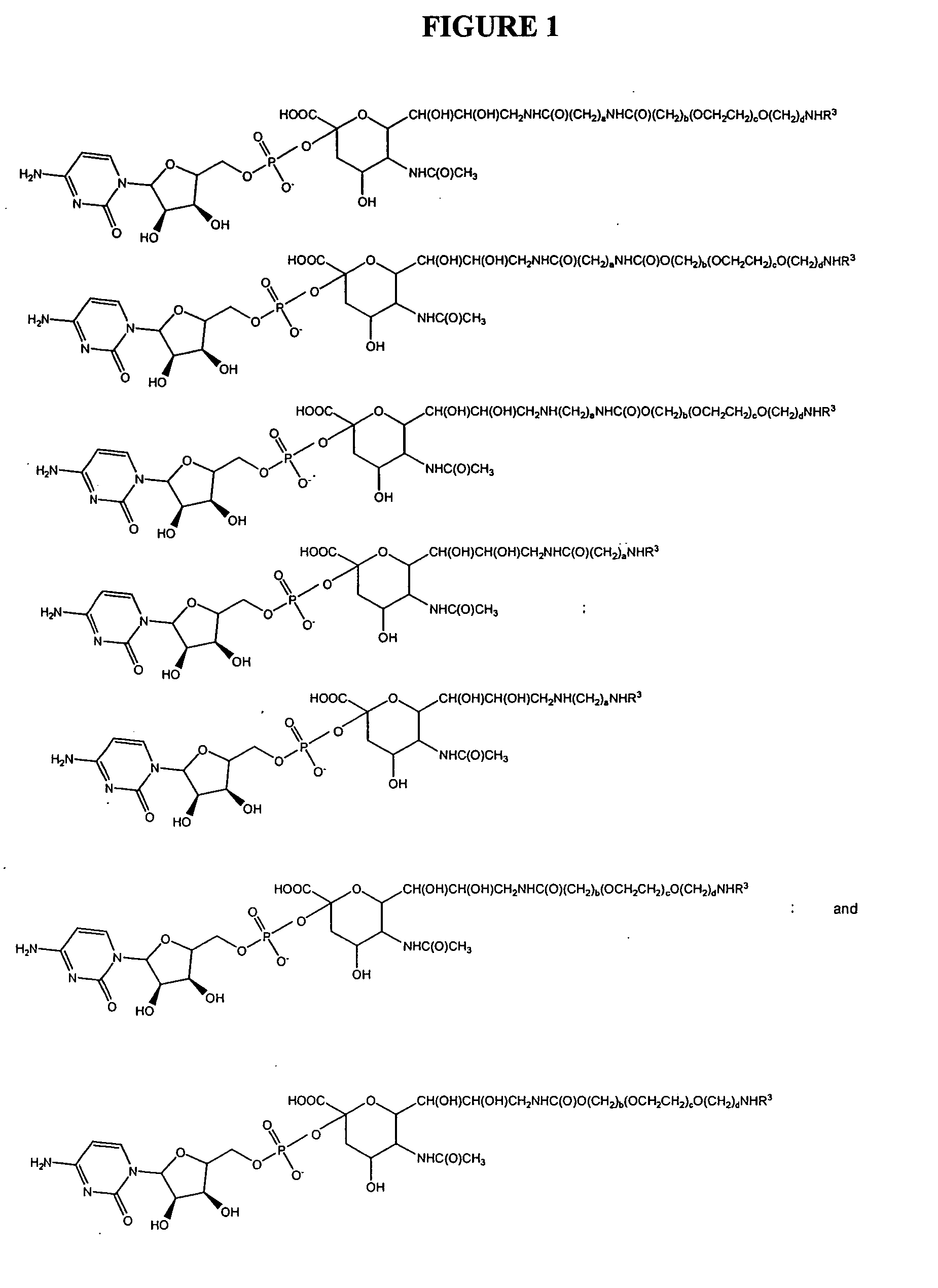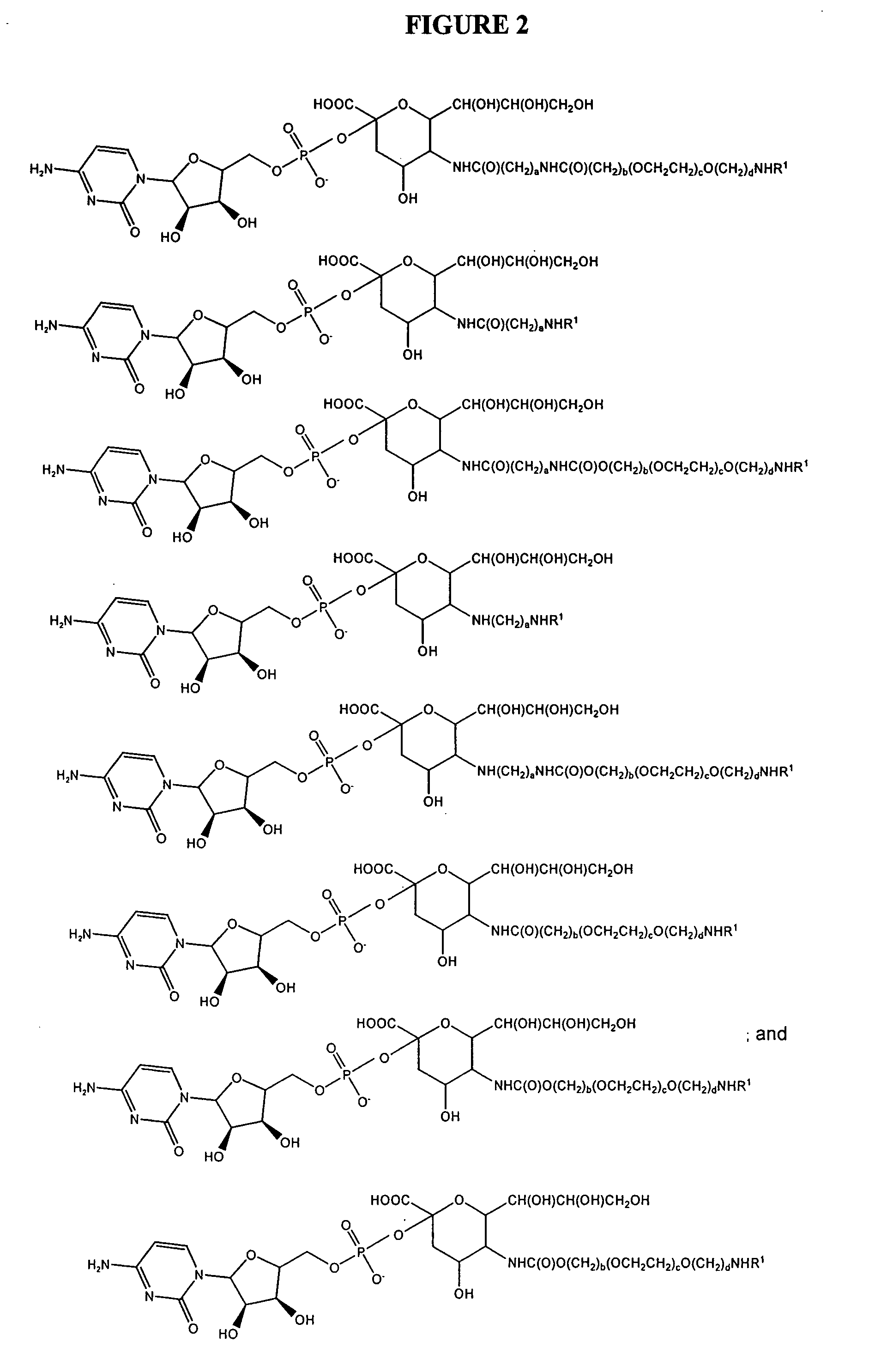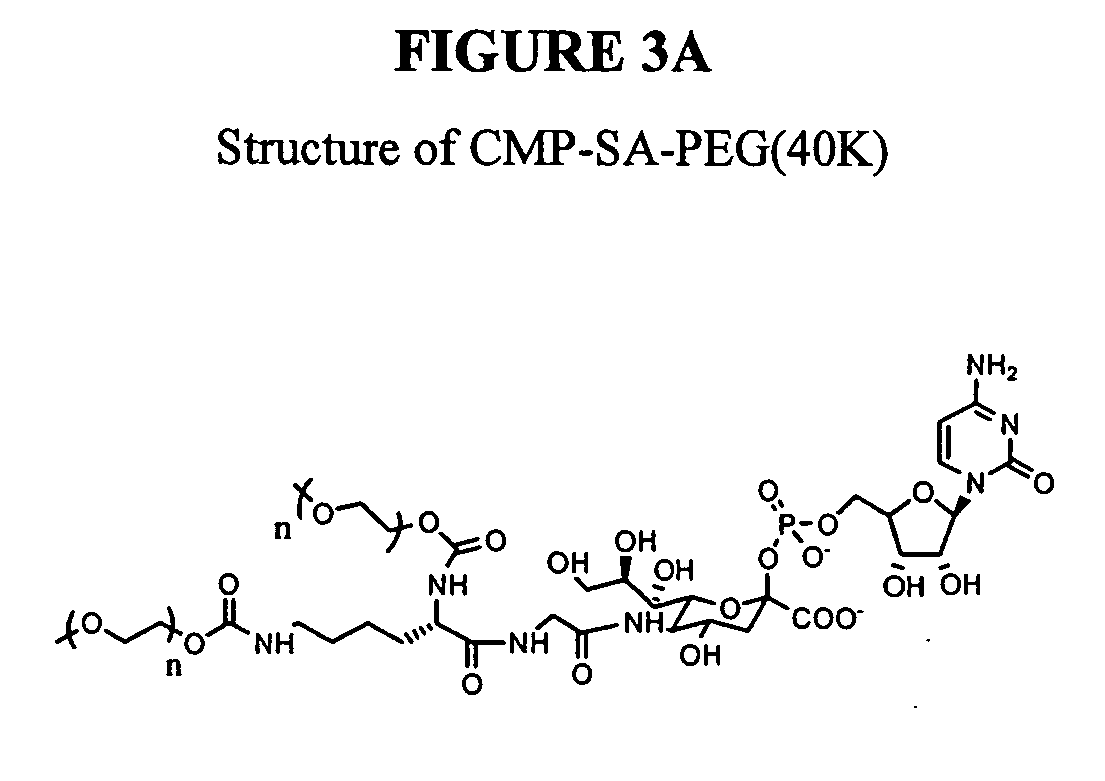Glycopegylated erythropoietin
a technology of erythropoietin and erythropoietin, which is applied in the direction of peptide/protein ingredients, extracellular fluid disorder, peptide sources, etc., can solve the problems of protein glycosylation, low final yeild of a desired glycoform, and microheterogeneity thus posing numerous problems, so as to improve pharmacokinetic properties and cost-effective
- Summary
- Abstract
- Description
- Claims
- Application Information
AI Technical Summary
Benefits of technology
Problems solved by technology
Method used
Image
Examples
example 1
Preparation of UDP-GalNAc-6′-CHO
[0371] UDP-GalNAc (200 mg, 0.30 mmoles) was dissolved in a 1 mM CuSO4 solution (20 mL) and a 25 mM NaH2PO4 solution (pH 6.0; 20 mL). Galactose oxidase (240 U; 240 μL) and catalase (13000 U; 130 μL) were then added, the reaction system equipped with a balloon filled with oxygen and stirred at room temperature for seven days. The reaction mixture was then filtered (spin cartridge; MWCO 5K) and the filtrate (˜40 mL) was stored at 4° C. until required. TLC (silica; EtOH / water (7 / 2); Rf=0.77; visualized with anisaldehyde stain).
example 2
Preparation of UDP-GalNAc-6′-NH2):
[0372] Ammonium acetate (15 mg, 0.194 mmoles) and NaBH3CN (1M THF solution; 0.17 mL, 0.17 mmoles) were added to the UDP-GalNAc-6′-CHO solution from above (2 mL or ˜20 mg) at 0° C. and allowed to warm to room temperature overnight. The reaction was filtered through a G-10 column with water and the product collected. The appropriate fractions were freeze-dried and stored frozen. TLC (silica; ethanol / water (7 / 2); Rf=0.72; visualized with ninhydrin reagent).
example 3
Preparation of UDP-GalNAc-6-NHCO(CH2)2—O-PEG-OMe (1 KDa)
[0373] The galactosaminyl-1-phosphate-2-NHCO(CH2)2—O-PEG-OMe (1 KDa) (58 mg, 0.045 mmoles) was dissolved in DMF (6 mL) and pyridine (1.2 mL). UMP-morpholidate (60 mg, 0.15 mmoles) was then added and the resulting mixture stirred at 70° C. for 48 h. The solvent was removed by bubbling nitrogen through the reaction mixture and the residue purified by reversed phase chromatography (C-18 silica, step gradient between 10 to 80%, methanol / water). The desired fractions were collected and dried at reduced pressure to yield 50 mg (70%) of a white solid. TLC (silica, propanol / H2O / NH4OH, (30 / 20 / 2), Rf=0.54). MS (MALDI): Observed, 1485, 1529, 1618, 1706.
PUM
| Property | Measurement | Unit |
|---|---|---|
| Structure | aaaaa | aaaaa |
| Bioactive | aaaaa | aaaaa |
Abstract
Description
Claims
Application Information
 Login to View More
Login to View More - R&D
- Intellectual Property
- Life Sciences
- Materials
- Tech Scout
- Unparalleled Data Quality
- Higher Quality Content
- 60% Fewer Hallucinations
Browse by: Latest US Patents, China's latest patents, Technical Efficacy Thesaurus, Application Domain, Technology Topic, Popular Technical Reports.
© 2025 PatSnap. All rights reserved.Legal|Privacy policy|Modern Slavery Act Transparency Statement|Sitemap|About US| Contact US: help@patsnap.com



